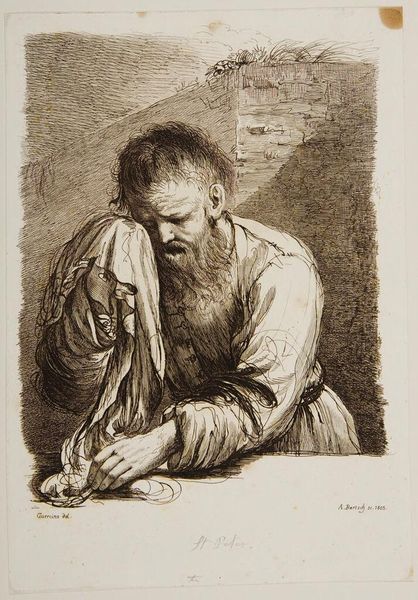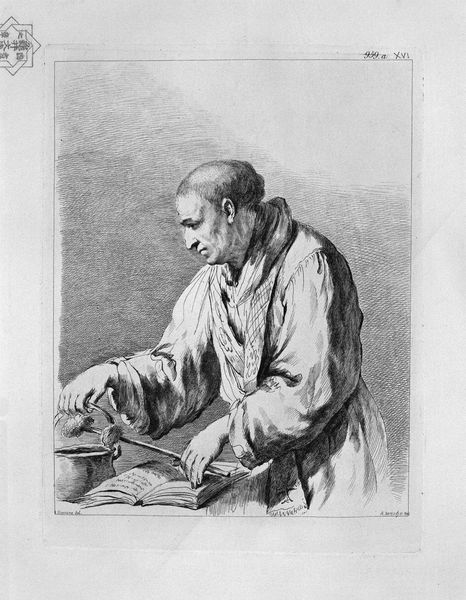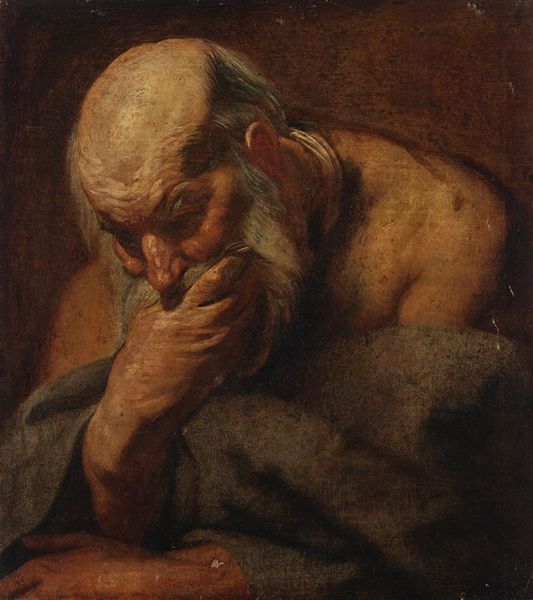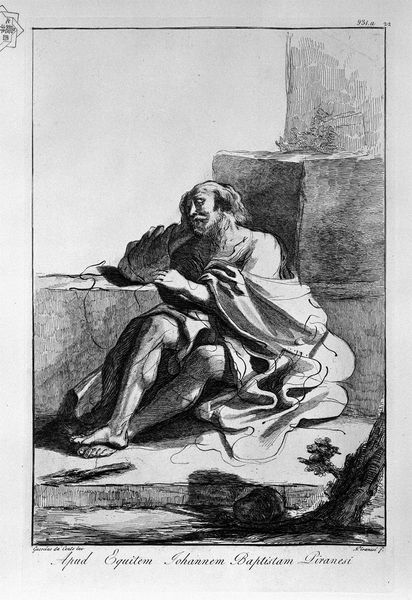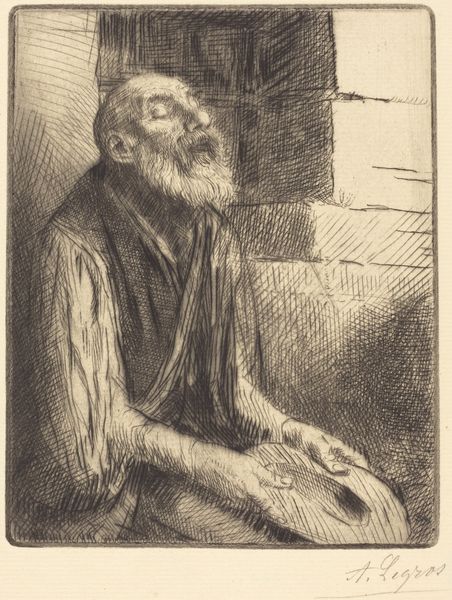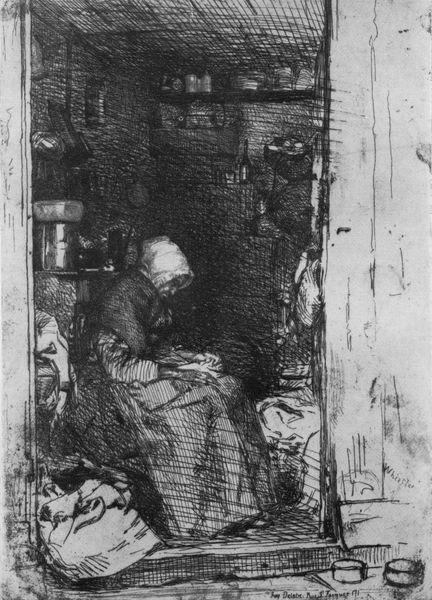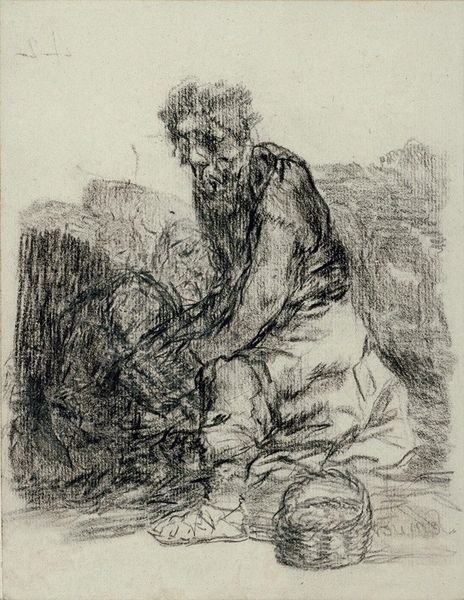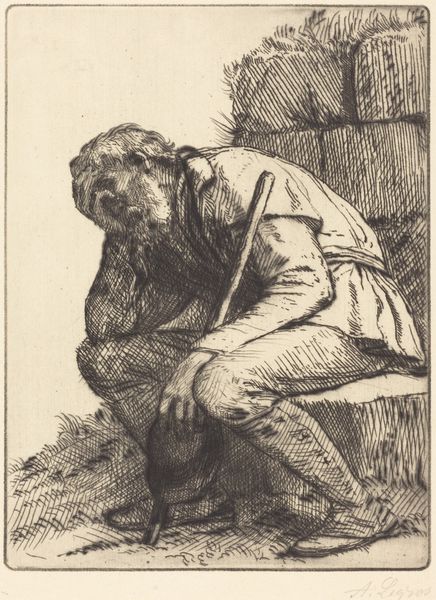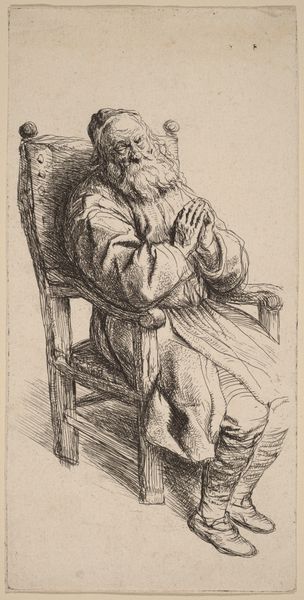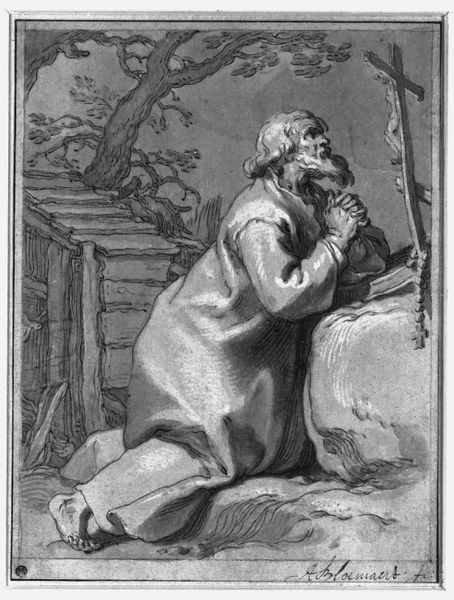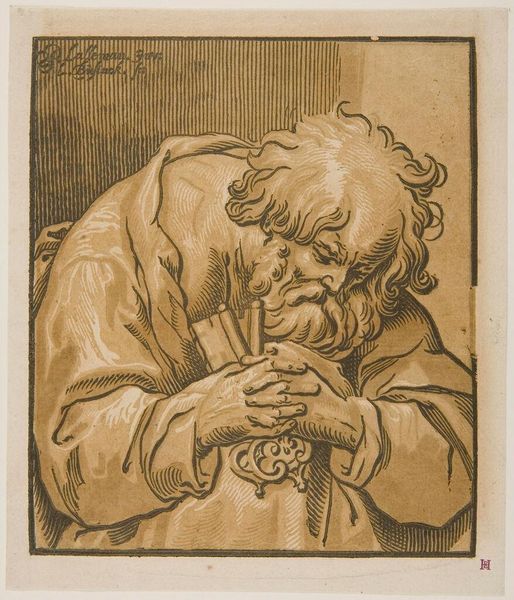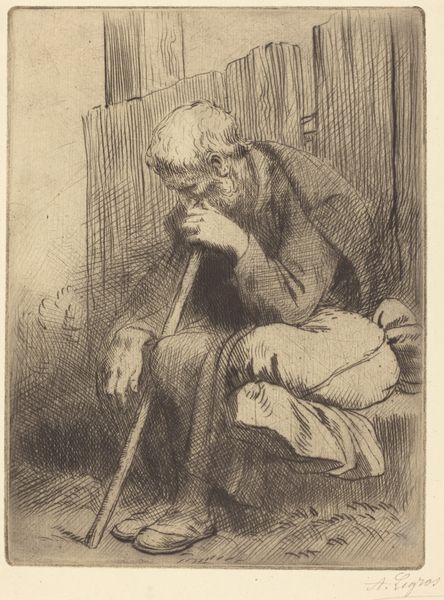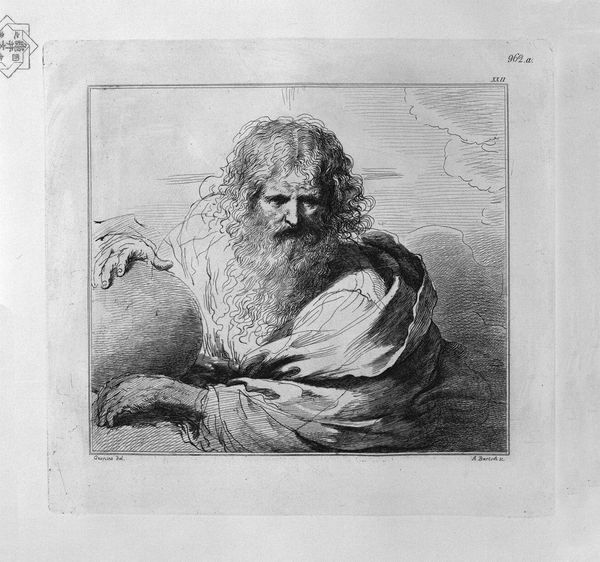
print, etching, engraving
#
portrait
#
narrative-art
#
baroque
# print
#
etching
#
history-painting
#
engraving
#
realism
Copyright: Public domain
This is Giovanni Battista Piranesi's etching after Guercino titled "Old Weeping (half length)." Piranesi created this print during the 18th century in Italy, a period defined by the Grand Tour, where wealthy Europeans, particularly the British, traveled to Italy to immerse themselves in its classical art and culture. Piranesi, however, disrupted this romantic view. He was fascinated by the grandeur of ancient Rome, but also by its decay and the passage of time. Here, instead of depicting triumphant Roman heroes or idealized landscapes, Piranesi presents a figure overcome with sorrow. The man's weary posture, the deep shadows, and the coarse lines of the etching all contribute to a sense of despair. Piranesi's choice to depict an "old weeping" figure challenges the prevailing artistic trends of his time and can be understood through the social context of 18th-century Italy, where the stark realities of poverty and hardship existed alongside the opulence of the elite. To further understand Piranesi’s work, one can delve into the archives of the art academies of the period, along with the letters and journals of Grand Tourists, to contrast their expectations with Piranesi’s poignant observations.
Comments
No comments
Be the first to comment and join the conversation on the ultimate creative platform.
